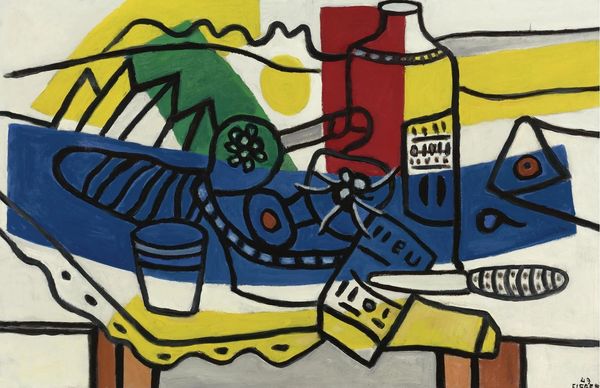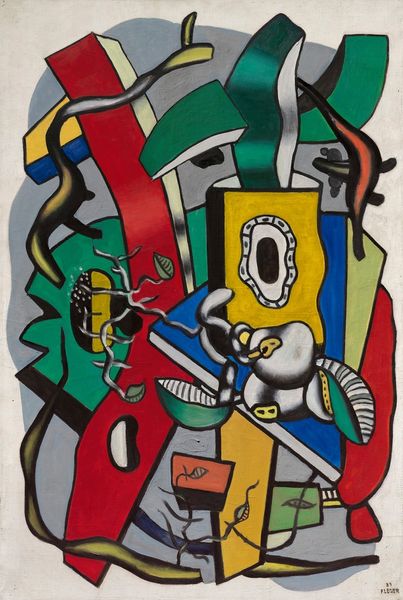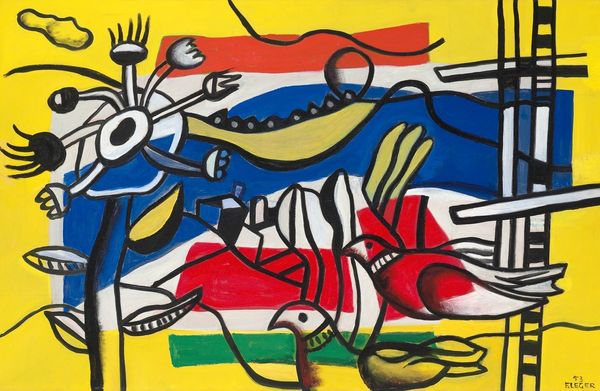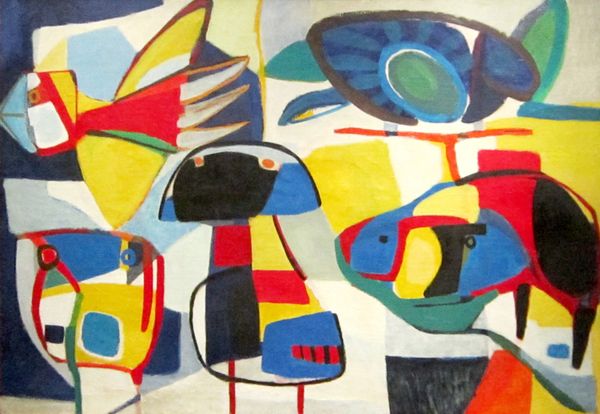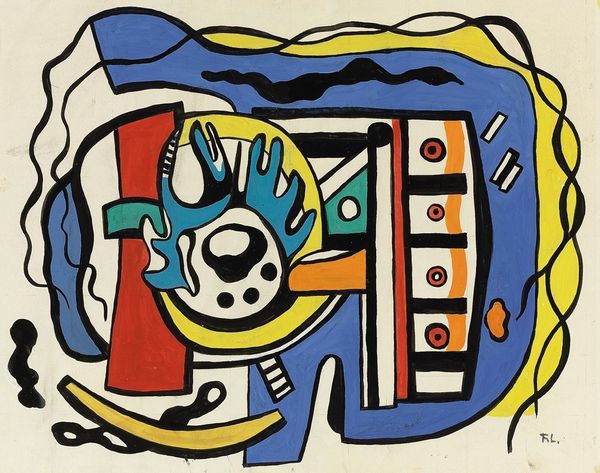
painting, oil-paint
#
cubism
#
painting
#
oil-paint
#
pop art
#
geometric
#
modernism
Copyright: Modern Artists: Artvee
Editor: Fernand Léger’s “Le Compotier,” created in 1948 using oil paint, strikes me as boldly optimistic with its strong lines and vibrant colors. It feels like a celebration of the everyday object. What layers of meaning can you uncover in this still life? Curator: This seemingly simple arrangement is far from apolitical. Post-war, artists like Léger grappled with reconstructing not only cities but also societal values. The “Compotier,” or fruit bowl, is reborn. It uses Cubism's fractured perspective, which allowed artists to represent the multifaceted experience of modern life and to question traditional hierarchies within artistic representation. Note the democratisation of forms: the distinction between foreground and background is blurred. Editor: That's fascinating! So the fractured style and everyday objects weren't just aesthetic choices? Curator: Precisely! It reflects a world attempting to piece itself back together. There's a very intentional lack of depth, collapsing pictorial space. What might Léger be suggesting about class structures and social hierarchies at this historical moment? The flattening effect makes every form equally important. Even a humble fruit bowl deserves our attention. It’s almost… agitprop? Editor: So, Léger is using the language of Cubism, moving away from representing traditional symbols and creating paintings for a post-war public, paintings with political commentary? Curator: Exactly! Léger democratizes form to underscore that society must rebuild. The bright colors signal that after the darkness and greyscale devastation of WWII, life is optimistic and returning to what it once was. Even, that life is better than it once was, post-war. What do you make of his strategy now that we have discussed these different interpretations? Editor: I see it completely differently now. What initially appeared decorative becomes a powerful statement of equality and renewal. I’m blown away. Curator: And hopefully that's just the start. Now, consider what still lifes are displayed, and by whom? That awareness, that active interrogation, is where true appreciation lies.
Comments
No comments
Be the first to comment and join the conversation on the ultimate creative platform.

